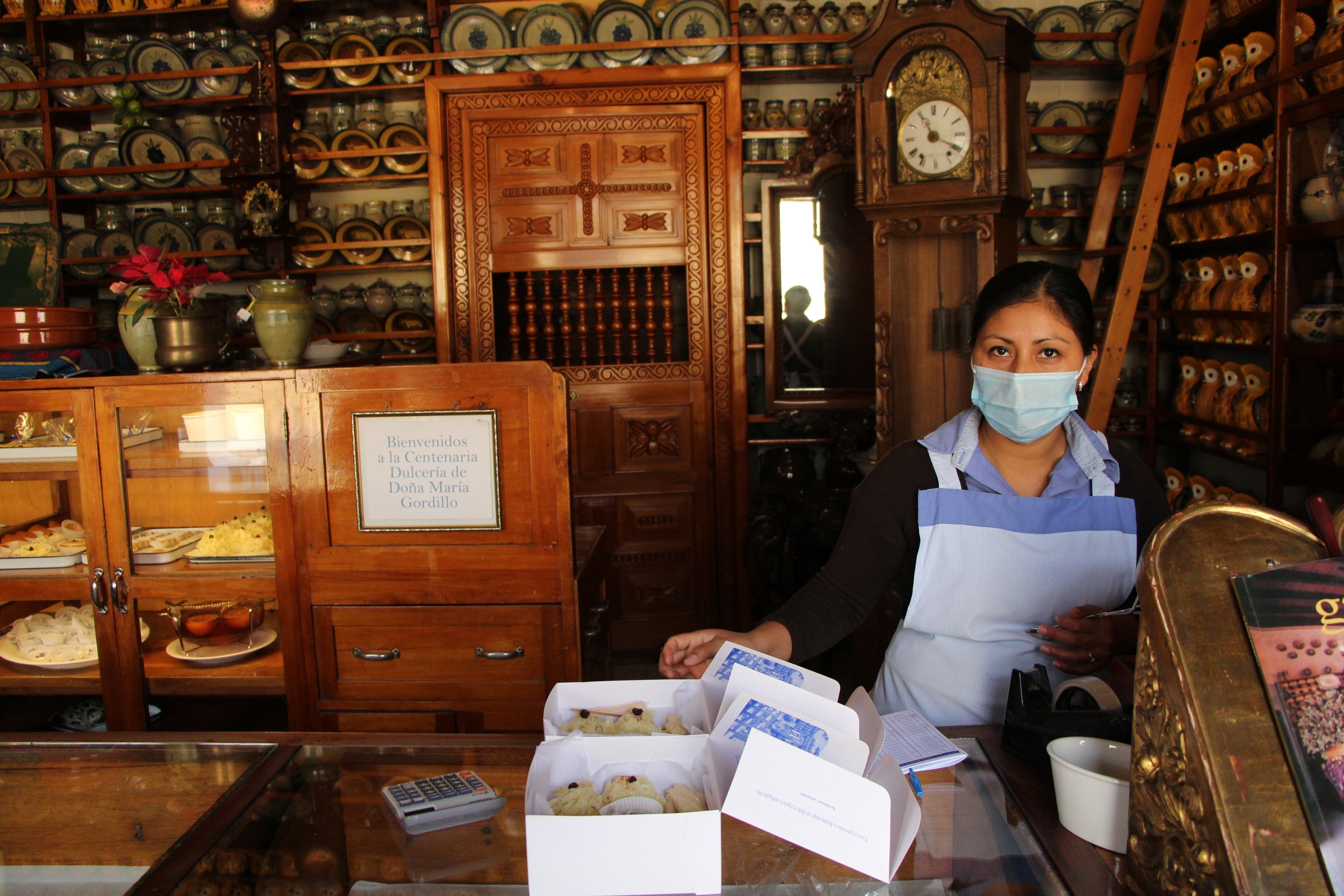The secrets of a family candy store
MarÍa Duran prepares to be the next matriarch of Doña María Gordillo Dulces Tipícos.
By Molly Wilson
Locked away in María Mercedes’ house, a black USB stick and a recipe book sit – the only copies of the secrets that produce Antigua’s most famous traditional Guatemalan candies.
María Cristiano, María Mercedes’ mother, always kept key elements of the recipe directions a secret from her staff, only teaching her family the specifics of how to make candies such as canillitas de leche, cocadas and colochos de guayaba.
Her daughter, María Duran, digitized the recipes and uploaded them to the USB before bringing them both to her mother’s house and leaving her to hide them so Duran herself wouldn’t know where they were kept. That way, she couldn’t tell anyone. Everything made in Doña María Gordillo Dulces Típicos is now taught to staff and cooked by memory.
For the family who runs Doña María Gordillo Dulces Típicos – a high-end traditional candy store in the heart of Guatemala’s most famous tourist city – the name María comes with a set of family expectations, including guarding the secrets, spanning six generations, that make the dulcería unique. No one is allowed in the kitchen unless they are family or one of roughly 20 employees who get to know some of the secrets, including the recipes.
María Mercedes Duran, 27, is María Mercedes’ only daughter. She’s next in line to take over the dulcería.
“I have that responsibility to continue the family business, not because my brothers can’t continue, but I know it’s a women’s enterprise,” Duran said.
When Duran graduated from Universidad Galileo with a business administration degree in 2018, her mother congratulated her and asked, “What do you want to do? Do you want to work at Doña María?”
At first, she chose the store.
“Why would I go anywhere in the world when I have this special enterprise?” she said.
In May 2021, she decided she wanted to build something different from Doña María Gordillo and her family to create some balance. She opened a small restaurant, Corazonada, just outside Antigua.
Back at the candy store, the shelves are covered with candles and pottery, including owl piggy banks from María Gordillo’s time when people used them to store money. Hanging on the back wall are copper pots that were used to make candy until 20 years ago, when they were deemed a health hazard. The counter runs the entire length of the shop, some of it covered in glass to showcase candy, other parts wood where workers stamp paper bags with the Doña María Gordillo Dulces Típicos logo and fold boxes.
Slowly, María Duran’s grandmother taught her some of the secrets María Christina wouldn’t let the cooks know. She was stubborn about how she ran the dulcería and valued the traditions that came before her.
Soon, the family secrets and the dulcería that comes with them will be Duran’s to share and hide. Until then, she works with her mother on weekends when she’s not taking care of her own restaurant.
For many Guatemalans, Doña María Gordillo Dulces Típicos is also a family tradition. Customers can walk in knowing that this is how the store looked when their parents and grandparents entered.
“Every time I think about the importance of Doña María Gordillo in Guatemala, it’s an even bigger responsibility because it’s not only my family,” she said.
Duran and her mother have made a few changes, including changing to a more modern payment method, but one thing hasn’t changed – no outsiders in the kitchen.



